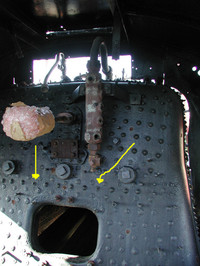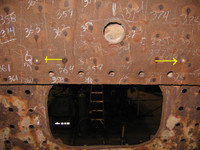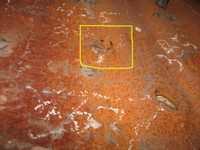Gentle Forum Members,
LIRR G5s Steam Locomotive #39 is undergoing restoration of her firebox at the Strasburg Railroad Company. A discovery has been made of two, 3/8” copper tubes, that pass through two staybolts, above and just left and right of the firebox door opening. These tubes run from outside the backhead, through the backsheet and terminate in the firebox.

Upon investigation, LIRR G5s #35 has the identical tubes as does PRR G5s #5741 at the Pennsylvania Railroad Museum.

The #5741 was investigated by personnel from the Strasburg Railroad Company. The copper tubes are visible from and terminate inside the firebox. The copper tubes are NOT visible outside the lagging and cover sheets on the backhead. This leads us to believe the tubes make right angle turns as they exit the backhead and go somewhere! Short of disassembling #5741’s backhead, (NOT GOING TO HAPPEN), we have no idea what the copper tubes are for or where they go.
Many conversations have been held on Long Island with old heads who had experience with the G5s. No one can remember the use or necessity of these mysterious tubes. Looking at copies of original Altoona engineering drawings, there are references to “tubes” on the drawings, but nothing more to indicate what they were for or where they ran.
Does anyone have any ideas or knowledge of these copper tubes on the G5s? If you do, please respond in this thread and share your knowledge or contact me at [email protected] Your assistance and interest in this mystery is appreciated.


Thank you,
Don Fisher, President
Railroad Museum of Long Island
PRRT&HS Member #6837
LIRR G5s Steam Locomotive #39 is undergoing restoration of her firebox at the Strasburg Railroad Company. A discovery has been made of two, 3/8” copper tubes, that pass through two staybolts, above and just left and right of the firebox door opening. These tubes run from outside the backhead, through the backsheet and terminate in the firebox.

Upon investigation, LIRR G5s #35 has the identical tubes as does PRR G5s #5741 at the Pennsylvania Railroad Museum.

The #5741 was investigated by personnel from the Strasburg Railroad Company. The copper tubes are visible from and terminate inside the firebox. The copper tubes are NOT visible outside the lagging and cover sheets on the backhead. This leads us to believe the tubes make right angle turns as they exit the backhead and go somewhere! Short of disassembling #5741’s backhead, (NOT GOING TO HAPPEN), we have no idea what the copper tubes are for or where they go.
Many conversations have been held on Long Island with old heads who had experience with the G5s. No one can remember the use or necessity of these mysterious tubes. Looking at copies of original Altoona engineering drawings, there are references to “tubes” on the drawings, but nothing more to indicate what they were for or where they ran.
Does anyone have any ideas or knowledge of these copper tubes on the G5s? If you do, please respond in this thread and share your knowledge or contact me at [email protected] Your assistance and interest in this mystery is appreciated.


Thank you,
Don Fisher, President
Railroad Museum of Long Island
PRRT&HS Member #6837